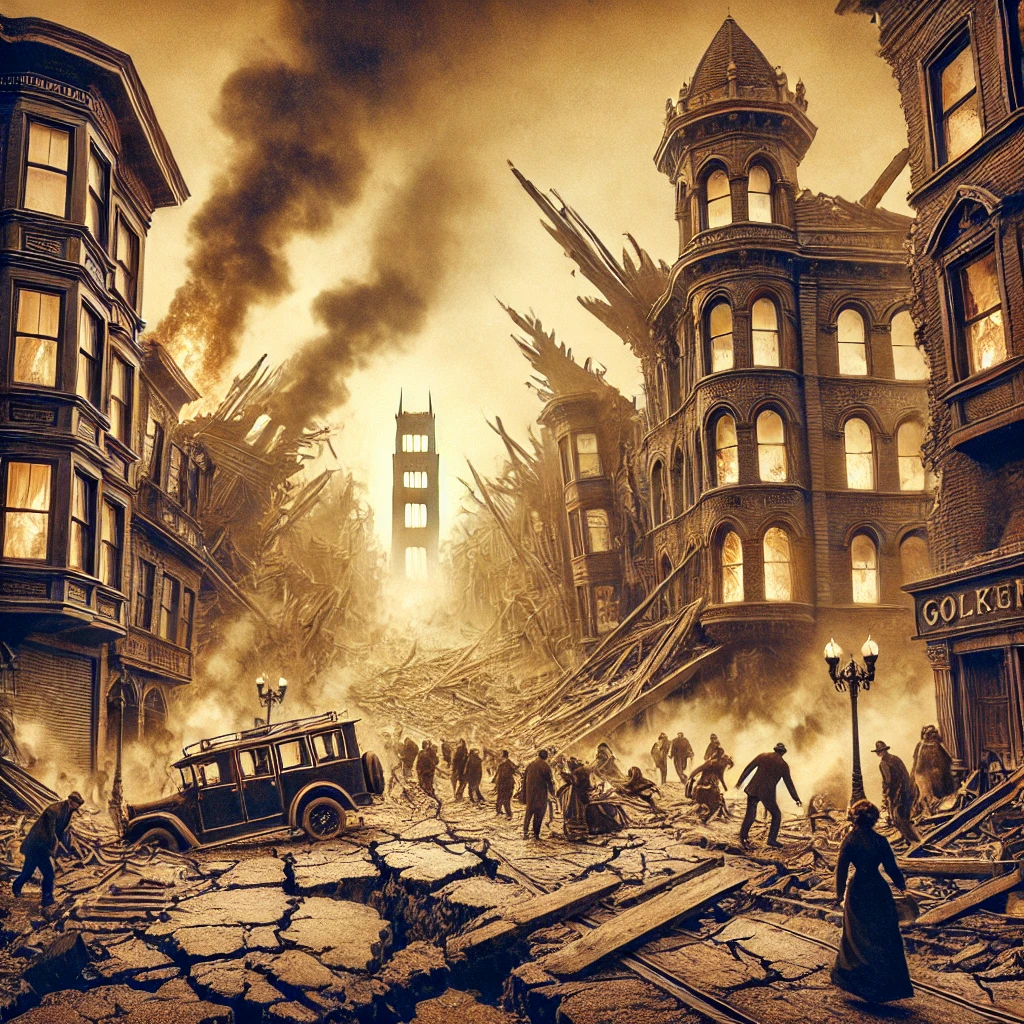4 Unbelievable Stories of Natural Disasters
The San Francisco Earthquake, 1906: A City in Ruins
Introduction
At 5:12 AM on April 18, 1906, San Francisco was rocked by one of the most powerful earthquakes in U.S. history. Measuring an estimated 7.9 on the Richter scale, the quake shook the city for less than a minute—but its effects would be felt for decades. Buildings collapsed, fires erupted, and more than 80% of the city was destroyed. The disaster left over 3,000 people dead and 250,000 homeless, forever changing the landscape of San Francisco.
The Devastation and Response
The earthquake itself caused immense destruction, but the fires that followed were even more catastrophic. Broken gas lines ignited flames that raged for three days, reducing entire neighborhoods to ash. The lack of water due to ruptured pipelines forced firefighters to use dynamite to create firebreaks—sometimes making things worse.
Despite the destruction, San Francisco’s resilience was remarkable. Tent cities sprang up, relief efforts poured in, and within a few years, the city began its transformation into the metropolis we know today.

Lessons from the 1906 Quake
This disaster was a wake-up call for earthquake preparedness. Building codes were eventually strengthened, and modern seismic monitoring was developed. Today, San Francisco continues to brace itself for the next big one.
Conclusion
The 1906 earthquake reminds us of the power of nature and the importance of preparedness. Could your city withstand a similar disaster? Let’s discuss in the comments!
The Joplin Tornado, 2011: A City Transformed by the Storm
Introduction
On May 22, 2011, Joplin, Missouri, was forever changed by one of the deadliest tornadoes in U.S. history. The EF5 twister, packing winds over 200 mph, carved a mile-wide path of destruction through the city, killing 161 people and injuring over 1,000. In just 38 minutes, Joplin’s landscape was unrecognizable.
The Storm’s Impact
The tornado flattened homes, businesses, and even a hospital. Cars were tossed like toys, and debris was carried over 100 miles away. More than 8,000 buildings were damaged or destroyed, causing an estimated $2.8 billion in damages.
How Joplin Rebuilt
Despite the tragedy, Joplin’s resilience shined. Volunteers flooded in, rebuilding efforts began immediately, and by 2016, 90% of the destroyed businesses had reopened. The city also invested in stronger tornado shelters and early warning systems to prevent future loss of life.
Conclusion
Joplin’s story is one of tragedy, resilience, and hope. What tornado preparedness measures do you think should be standard across the U.S.? Share your thoughts below!
The Japanese Tsunami, 2011: A Wave of Destruction
Introduction
March 11, 2011, started as an ordinary day in Japan—until a 9.0-magnitude earthquake triggered a massive tsunami, one of the deadliest in modern history. Towering waves reaching 133 feet surged inland, wiping out entire towns and killing over 18,000 people.
The Scale of the Disaster
The tsunami devastated Japan’s northeastern coast, sweeping away homes, roads, and businesses. In addition to the staggering loss of life, the disaster triggered the Fukushima nuclear meltdown, causing long-term environmental and health concerns.
Japan’s Response and Recovery
In the aftermath, Japan displayed remarkable resilience. Advanced disaster response teams, strict building codes, and early warning systems helped prevent an even greater catastrophe. In the years since, Japan has invested heavily in tsunami barriers and evacuation plans.
Conclusion
This disaster reminds us of nature’s power and the need for preparedness. Could your city withstand a similar event? Let’s talk about it in the comments!
Hurricane Katrina, 2005: A Storm That Changed a Nation
Introduction
In late August 2005, Hurricane Katrina became one of the most devastating natural disasters in American history. Striking Louisiana and Mississippi as a Category 5 storm, it caused massive flooding, killed nearly 1,800 people, and left over a million homeless.
The Aftermath and Government Response
New Orleans was hit hardest when levees failed, submerging 80% of the city. Thousands were stranded on rooftops, in the Superdome, or waiting for rescue. Delays in relief efforts led to nationwide outrage, highlighting failures in emergency preparedness.
Rebuilding and Lessons Learned
Despite the tragedy, New Orleans rebounded. Billions were invested in improved levees, flood protection, and emergency response strategies. Today, the city stands as a symbol of resilience, though challenges remain.
Conclusion
Katrina reshaped disaster preparedness in the U.S. How can we ensure such failures never happen again? Let’s discuss.